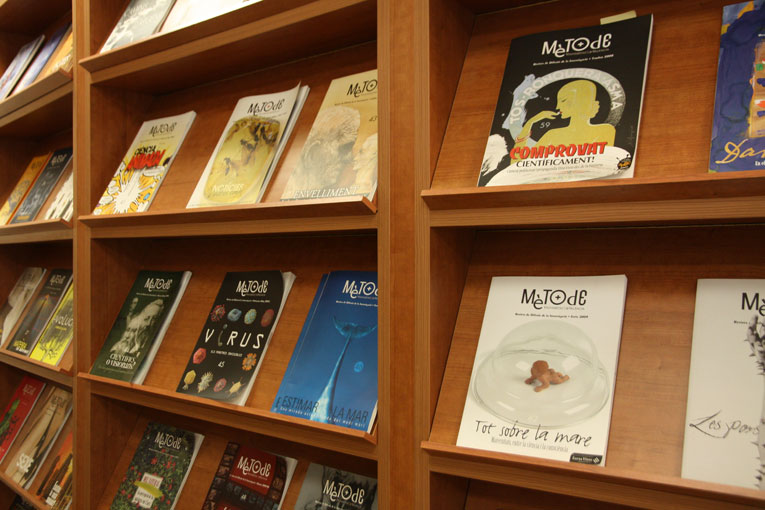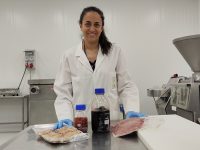
 © Mètode |
||
|
Although some people – and this really is the case – hold that it is nonsense to contend that humanism, art and technology can coexist, they have an infallible antidote for their prejudice in the form of Mètode, a Valencia-based review for the world, which judiciously brings together scientific divulgation, thought, art and a certain kind of sophisticated entertainment with science as its mainstay. Mètode is twenty years old and it has reached this point having achieved a goal, namely that of becoming a major reference in the domain of thought, in the almost-wilderness of scientific divulgation in Spain. Mètode first appeared in 1992 as a review aiming at disseminating research being done at the University of Valencia. The first issue, in June that year, consisted of a monographic study on drug addiction and it was a well-produced university magazine, very much in the style of publications of the institution, in black and white with the cover in colour. The director then was Olga Dénia. Its graphic evolution did not stop there, and neither did the number of pages, which had reached seventy by the year 2000, when it appeared in an adhesive bound edition. The review has been published in Catalan since its inception but, since 2011, the Mètode Annual Review has also been produced as a yearbook consisting of its monographic studies in English. There are also issues in Spanish, the language in which it is distributed among Spanish universities. Martí Domínguez, who had previously been working with the journal, was appointed as scientific director in 1998 and, since the summer of 1999, which is to say since issue number 25, has been its director. This biologist, well-known essayist and writer was awarded the National Prize for Journalism by the Generalitat (Government) of Catalonia in 2007 as director of the magazine. This is not the only award to be received by Mètode. In 2007 it received the Association of Periodical Publications Prize for the Best Review and, in 2009, the prestigious Serra d’Or Prize, among others. The basic editorial team is presently comprised by Martí Domínguez, with Anna Mateu as editor in chief and José Luis Iniesta as layout designer and art director, in addition to a copyreader and a webmaster, the latter two working part-time. The director also endeavours to incorporate into the review’s activity trainee journalism students from the University of Valencia who show interest and skills relevant to the themes dealt with in Mètode. The journal is published on a quarterly basis, with one issue of some 130 pages coming out each season. Meticulously produced in colour, its design and photographic work are rigorously supervised in keeping with the spirit of Mètode, the aim being to produce a review that is related to art and which disseminates science, while revealing attractive links between the two spheres. Mètode embraces a wide range of contents: specialist interviews, reviews of scientific literature, informative articles, monographic dossiers, in addition to sections devoted to opinion, thought and other areas, for example, that concerned with cooking from the scientific point of view. From applied science, technology and the ethical debates involved, medicine, botany and its cultural aspects… to surrogate motherhood and the endemic lupin species Lupinus mariae-josephi through to oil prospecting, the journal’s gaze is wide-ranging and it is considered that its scientific rigour must also have a popularising tone. The limits of the contents are defined by what is strictly deemed to be scientific, this conception being totally bound to nature and technology. Social issues are only dealt with when they are closely related with the pure scientific standpoint. For example, a special issue on language discussed its biological foundations but Mètode does not focus on the social sciences since this is not its orientation. Some of the most eminent authors specialising in scientific themes are regular contributors to Mètode, including Xavier Bellés, Josep Vicent Boira, Ramon Folch and Jorge Wagensberg, among many others. Mètode has been resolutely determined to include Catalan, Spanish and international scientists in its pages, either by their contributing articles or giving interviews. Among the international figures it has featured are the linguist Noam Chomsky; Lynn Margulis, a leading figure in evolutionary biology; Sydney Brenner, Nobel laureate in Medicine; and George Smoot, Nobel laureate in Physics. Furthermore, great attention is given to illustration and Mètode commissions the work of both young and established artists who are interested in scientific matters and who suggest beautiful covers or title illustrations (at the start of monographic studies or articles) and charming graphic touches such as those appearing on every odd page of the dossiers or the slightly singed paper of the Summer 2011 issue titled “Quan es crema el bosc” (When the Forest Burns). Among the most notable illustrators from the Catalan-language territories whose work has appeared in Mètode are Alfaro, Frederic Amat, Perejaume, Miquel Navarro, Carmen Calvo and Joan Cardells. Science is Culture Although this is a university scientific journal it is not an academic journal. Martí Domínguez states that Mètode is a publication concerned with thought and with a significant visual content, produced by writers from the domain of science to be read by people from the domain of letters who seek therein inspiration and new perceptions. Mètode explicitly upholds the task of building bridges between culture and science by means of consistently offering essays that are entertaining without any padding or gratuitous material. This is transversal territory seeking a readership with a taste for art and embodying a certain Da Vinci spirit. After its success with the critics, it is time to expand the journal’s market and visibility. It now has a print run of 3,500 copies (2,500 subscriptions plus 1,000 on sale) and initiatives encouraging its opening up within Spain and also in Europe have multiplied. In 2008, the Xarxa Vives (21 universities of the Catalan-speaking territories associated in a network) chose it as an essential reference while, in 2011, the Catalan-language web portal and news outlet Vilaweb opened up Canal Mètode (Mètode Channel), a section offering material from the publication twice a month, an initiative which Domínguez sees as a very positive way of giving visibility to the journal. Moreover, Mètode has its own products that extend its reach, including books which, together with its publication in different languages and presence on the Web, should contribute towards its further consolidation. Carme Ferré Pavia. Lecturer in Communication Sciences at the Autonomous University of Barcelona (UAB). |
 © Transfer Cover of Transfer‘s latest issue, yearly publication in English co-edited by’Institut Ramon Llull (IRL) and Publicacions de la Universitat de València (PUV). |
|





